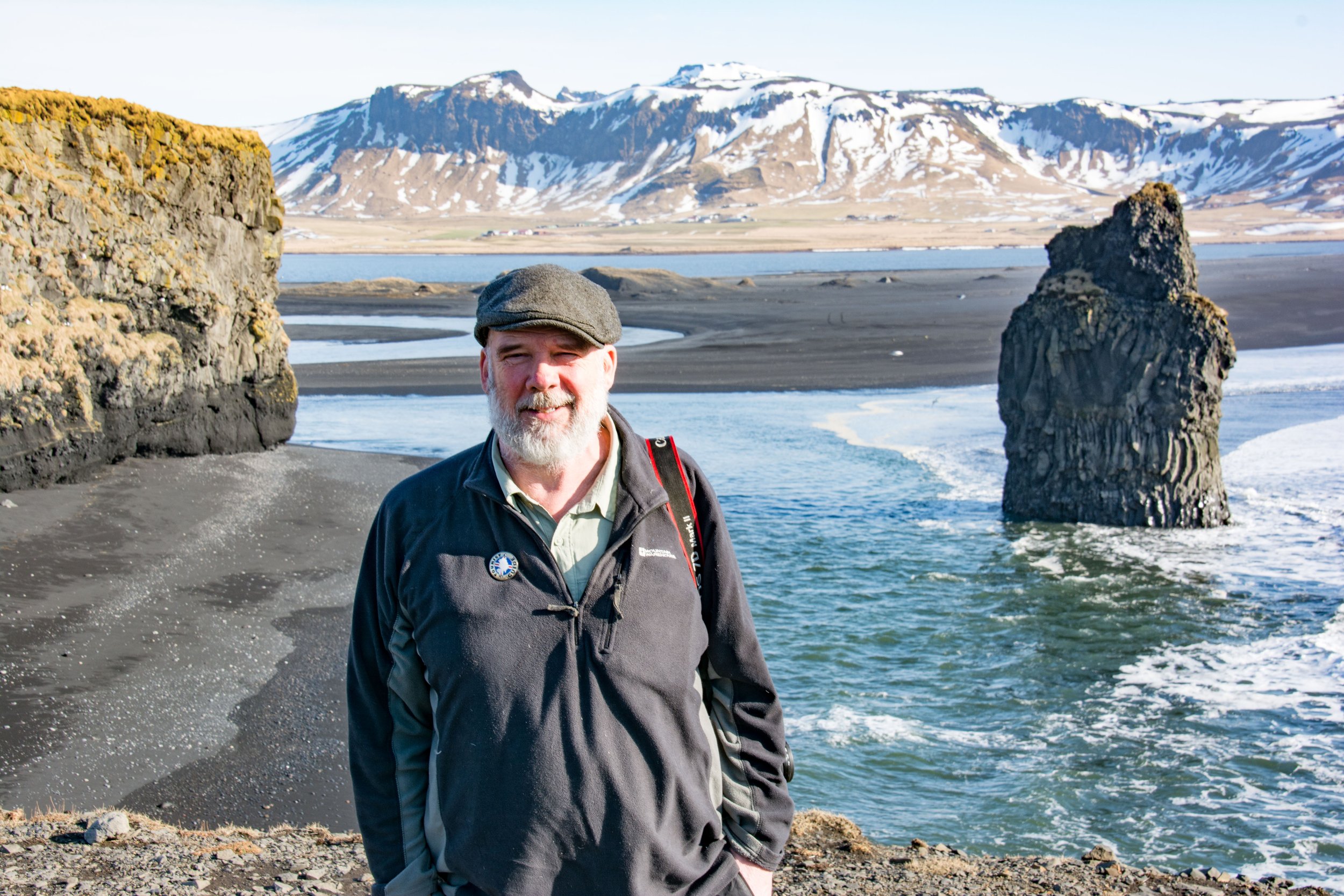Travel Guide to Iceland’s Westfjords
My first trip to the Westfjords was in a campervan back in 2016. I had grown up hearing stories of my parents and aunt working at a fish factory in Patreksfjörður, and these stories drew me to live in Iceland in the first place. However, once I arrived, the Westfjords still seemed so far away—one of the most remote regions of a very remote country.
In many ways, it still is that faraway place. If you’re looking for the Iceland of your imagination—wide-open fjords, hardy fishing villages clinging to the coast, and stunning landscapes around every bend—the Westfjords is it.
There’s something magical about this region. For those who travel there, it becomes a firm favorite, but there are still so few travelers who make the journey, drawn instead by the easy and accessible adventures on the ring road.
Having all that grand nature mostly to yourself is a huge part of the appeal—there are only a few other places in Iceland where I’ve felt like the only human left on earth.
But is it as unique as I’m romanticizing it to be? Yes, truly. Even driving in and out of the fjords is a special experience, watching the water change color with the unique Icelandic light conditions, sunlight catching the craggy mountains.
There are steamy hot springs and rushing waterfalls everywhere, a culture that feels older than the rest of Iceland, and endless opportunities to discover something new for yourself.
Table of Contents


What are the Westfjords?
Photo: A Red Cherry, CC BY-SA 4.0, via Wikimedia Commons
The Westfjords is a distinctively mountainous region in the far northwest of Iceland, jutting out into the Greenland Sea and Atlantic Ocean. Characterized by its flat-topped mountains plunging into fjords, the area leaves little room for larger settlements, except in a few select locations.
The intricate coastline is another defining feature of the Westfjords. Although it represents about 10% of Iceland's land mass, it accounts for 50% of the nation's coastline.
The Westfjords is also the oldest part of Iceland, formed by volcanic eruptions 14 million years ago. This geological history makes the region markedly different from most other places in the country, with its uniform, block-shaped mountains.
Despite its natural beauty, the Westfjords is the least visited region in Iceland. Its distance from the main ring road has slowed the pace of tourism, which has turned out to be beneficial. The region has had extra time to consider the kind of tourism it wants to attract, resulting in a delightfully empty and serene area.
Even the local population is sparse, with just over 7,000 residents in the entire region, meaning any visitors who make it out this far can experience the region’s tunning landscapes in relative solitude.
Why visit
The major appeal of visiting the Westfjords is to experience Iceland without the crowds. On my first trip there in the early Spring of 2016, I barely ran into another person. Campsites were empty, as were the roads as I explored the region in depth. On subsequent trips, totaling four or five in the following years, not much had changed. This is the region where it’s easiest to find yourself alone in the vast landscapes of Iceland.
Another reason to visit is the locals themselves. My aunt married a man from Patreksfjörður, and my cousins are half Icelandic. When returning to Patro with my parents a few years ago, we were met with such great hospitality, enjoying lunch with some locals who knew my uncle and aunt.
Even on trips researching a guidebook in the region, I would often be met with the kindness of strangers, offering meals, cups of coffee, and telling me their life stories and the local gossip. There’s no rushing around here – the pace of life is delightfully slow.
Iceland is a country for road trips, and the Westfjords is no exception. Watching the scenery unfold from behind the windshield is epic, with roads skirting the fjords along the coast, up and over epic mountain passes, and memorable views at every turn. Plus, there are hardly any other cars on the road here, and plenty of little hidden valleys and viewpoints to pull over, get out of the car, and explore on foot.
Speaking of which, the hiking in the Westfjords is also incredible. Although there aren’t many well-known trails as there are in the rest of Iceland, The Hornstrandir Nature Reserve is the king of hiking, an uninhabited wilderness filled with amazing trails and Arctic foxes that will wake you up as they gnaw at your tent in the mornings (find out more on Hornstrandir below).
Elsewhere, the mountains of the Westfjords provide challenging and steep hikes but rewarding trekkers with outstanding views over the fjords. And to recover, the Westfjords also has a huge number of natural hot springs for a soak in the outdoors.
Where are the Westfjords? How to get here
The Westfjords is the rugged region of peninsulas and fjords in the far northwest of Iceland, jutting out into the Greenland Sea and North Atlantic. It might not look it upon first inspection, but the region is in fact quite separated from the rest of the country.
The regional hub, Ísafjörður, serves as the main gateway to this spectacular area. Ísafjörður is about 282 miles (454 kilometers) from Reykjavík, Iceland's capital, making it a significant journey but one well worth the effort for intrepid travelers seeking solitude and stunning scenery.
Getting here:
Traveling to the Westfjords from Reykjavík requires a bit of planning, as this region is not as easily accessible as other parts of Iceland.
By Car: Driving is the most practical way to reach the Westfjords. The journey from Reykjavík to Ísafjörður typically takes around 6-7 hours, depending on road conditions and stops along the way.
The route begins on Route 1 (the Ring Road) and then branches off onto Route 60 and Route 61, with the views getting ever more spectacular as you continue deeper into the Westfjords region.
By Car and Ferry: An alternative way to arrive in the Westfjords is to first drive to Stykkishólmur on the Snafellsnes Peninsula and then board the ferry. 2.5 hours later, you’ll be driving out the other end at Brjánslækur in the southern Westfjords. From Brjánslækur, it’s a 2-hour drive to Ísafjörður, or just 45 minutes to Patreksfjörður.
By Air: For those short on time, flying is the quickest option. Air Iceland Connect operates regular flights from Reykjavík Domestic Airport to Ísafjörður Airport, with a flight time of about 40 minutes. Approaching Ísafjörður airport is one of the most hair-raising landings one can experience, with the plane slipping between jagged mountains to land on the runway on one side of the fjord.
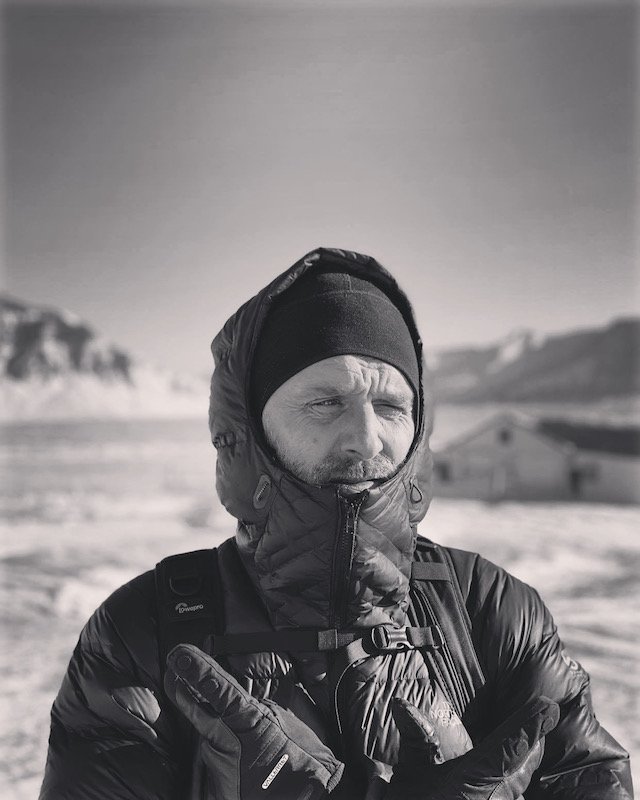
Connect with a local expert in Iceland for help perfecting your itinerary, answers to all your travel questions, and fabulous local tips for a better visit!
Best time to visit
The best time to visit the Westfjords is in Summer, from June to August. It’s the one area that doesn’t see a huge influx of tourism in the high season, so you can safely travel here without fear of it being overcrowded.
Since it’s summer, it’s when the conditions are most favorable for exploring the stunning landscapes. Temperatures range from a mild 50 to 60°F (10 to 15°C), which is very pleasant for being outdoors. In June, there’s also nearly 24 hours of daylight, which gradually decreases to about 18 hours by August.
Summer also means that the entire region is accessible. Roads and mountain passes are often closed here in other seasons due to snow, ice, and limited services for clearing roads. In summer, the landscapes are vibrant, with blooming wildflowers and cascading waterfalls, and it’s also the best time to see the birds at Látrabjarg Cliffs.
Being so far north, Spring sees snow lingering until May and June, while Autumn can mean snow as early as September. Finally, summer is the only time when it’s safe to venture to the Hornstrandir Nature Reserve for multi-day hikes through one of Europe’s last wildernesses.
Visiting in Autumn (September to October)
Autumn in the Westfjords brings cooler weather and moody rains, with temperatures ranging from 41°F to 50°F (5°C to 10°C). Daylight hours noticeably decrease as the weeks progress, and there’s a short burst of autumn colors before winter swiftly closes in.
Still, if you get lucky with the unpredictable weather, it’s a good time for some relaxed driving and hiking, but with a higher chance of storms comes a higher chance you might be cut off from your return journey to Reykjavik. But there are much worst fates than being stranded in such a beautiful region.
Visiting in Winter (November to March)
Winter is the most challenging time to visit the Westfjords. Temperatures often drop below freezing, and many roads, particularly the mountain passes, are closed due to snow. Daylight is limited, with only a few hours of light in December and January.
Despite the harsh conditions, winter offers unique experiences such as seeing the Northern Lights and enjoying some of the small ski resorts out the back of towns like Ísafjörður and Bolungarvík. If you’re feeling adventurous and are well-prepared for the elements, this is a season of raw, wintery beauty.
Visiting in Spring (April to May)
Spring is a shoulder season in the Westfjords. While the snow begins to melt, some roads may still be closed. Temperatures start to rise, and daylight hours increase significantly. This season offers a quieter experience with fewer tourists and a chance to see the awakening of nature.
I’ve been lucky every time I’ve visited in Spring with lovely weather, although there have always been areas where there is deep snow on the mountains and some areas that were closed.
How long to stay
To visit the entire region of the Westfjords, you should aim to spend at least three days here. This gives you one day each for the different areas: the southern shore, the central Westfjords, and then the northern fjords.
With four days, you could also drive up the Strandir Coast, an area to the east a bit separated from the rest of the Westfjords.
If you’re keen on visiting the Hornstrandir Nature Reserve, that should be the entire aim of your trip to Iceland. Budget at least three or four days to fully explore Hornstrandir, with a day on either side for traveling between Reykjavik and Ísafjörður.
Where to base yourself
Photo: Bjarki Sigursveinsson via Wikimedia Commons
Iceland is a country of road trips, so for any journey in the Westfjords, it makes sense to split your time between the different areas. It makes sense for a night in each, or for longer stays, two nights in the Ísafjörður area.
Patreksfjörður
In the south, Patreksfjörður is a busy little fishing village, with several hotels. From here, you’ll be able to drive out to the remote Látrabjarg Cliffs, Iceland’s westernmost point and some of the most impressive sea cliffs you’ll ever see. You can do both in a day and be back in Patreksfjörður in time for dinner.
Ísafjörður
In the north, Ísafjörður is the center point of all things, with easy access to the central Westfjords and the stretch of fjords along Route 61 as it heads southeast toward Hólmavík. It’s a good base with all the services you need. But it’s also a very short drive to places like Thingeyri and Flateyri, where local guesthouses offer a more tranquil stay.
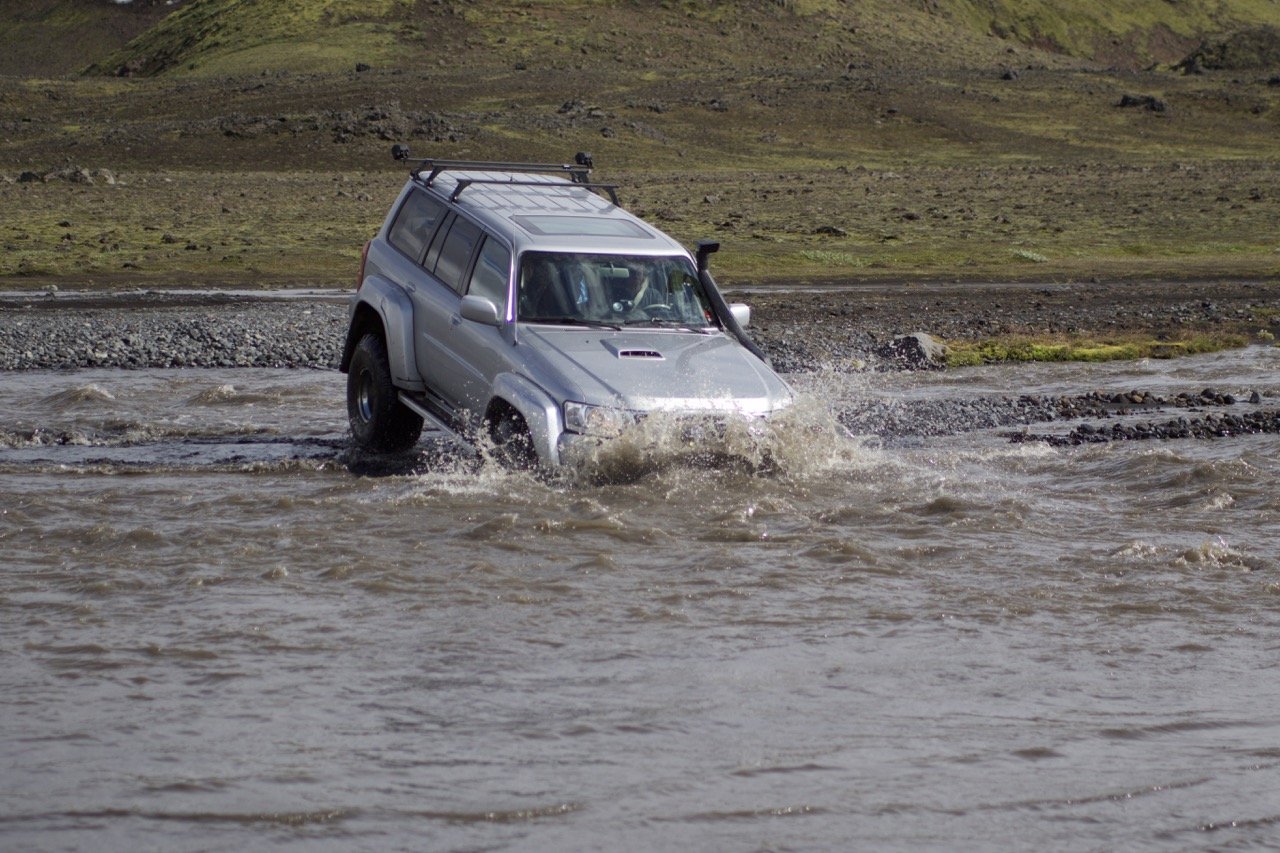
Towns to visit in the Westfjords
Ísafjörður
This is the largest town in the Westfjords, and the cultural and economic hub of the region. I have vivid memories of arriving here late one night in the depths of winter, catching a few hours of sleep before spending 16 hours the next day unloading a fishing ship that came in. It was a tough day, but the locals were friendly, and that night we ate and drank with the locals at Husid, a restaurant and bar in town.
Since then, I’ve been back four or five times, and really think Ísafjörður is an amazing place. The Maritime Museum is worth a look, delving into the region’s fishing heritage, and the small city center has some great cafés, restaurants, and bakeries.
Finally, if you’re planning on visiting Hornstrandir for some hikes, Ísafjörður is the jumping-off point thanks to the ferries that depart from the harbor and head across to the uninhabited nature reserve.
Photo: Sturlast~iswiki, CC BY-SA 4.0, via Wikimedia Commons
Bolungarvík
This is a surprisingly big town to the north of Ísafjörður, and a place that has grown on me as time went by. It was first settled in the 10th century, and became a major fishing outpost in the 17th, marking it as one of Iceland’s oldest fishing hubs.
The surroundings are beautiful, and the views of Hornstrandir uninterrupted. They’re even better from on top of the mountain Bolafjall, towering above the town with a radar station on top.
Nearby, a lonely road takes you to Skálavík bay, a windswept black sand beach at the very tip of the area. There’s also the fantastic Ósvör Maritime Museum, a reconstruction of a 19th century fishing station with a few boats, a salt house, and fish shed, whose curator will sometimes appear dressed in traditional Icelandic fishing gear made from lambskin.
Photo: Aconcagua, CC BY-SA 3.0, via Wikimedia Commons
Hólmavík
Hólmavík acts as the gateway to the Strandir Coast, the strip of the Westfjords to the far east of the region running up to Djúpavík. It’s also a convenient rest stop before tackling the mountain pass on Route 61 as it heads toward Ísafjörður.
There’s not much here other than a cluster of prim houses that cling to the fjord and the whales that swim offshore, but as a gateway to the wider Westfjords region, it gives a good taste of what to expect as you explore further.
If you’re in Hólmavík, I can highly recommend you stop by the Museum of Icelandic Sorcery and Witchcraft. The Strandir Coast was a hotbed of witches and sorcerers back in the day, and this small but well laid-out museum gives details about their lives, the Icelandic witch trials, and some of the more sinister spells and curses that they could perform.
A highlight is the Nábrók, or “Necropants”, a pair of pants made from the skin of a dead human and said to produce an endless supply of money.
Patreksfjörður
Situated in the southern part of the Westfjords, Patreksfjörður is a delightful little fishing town – and I’m not just saying so because my parents spent time here in the 80s and my cousins were born here. It’s the largest of the towns in the southern section of the Westfjords and acts as a quasi-capital of this area.
It offers access to some of the Westfjords’ most spectacular natural attractions, including Látrabjarg cliffs, home to millions of seabirds, and the pristine Rauðisandur beach.
While a lovely place, there actually isn’t that much to do other than eat at one of the handful of restaurants and fill up with petrol before heading further south. The setting is stunning though.
Photo: Emstrur, CC BY-SA 4.0, via Wikimedia Commons
Bíldudalur
Just a short drive from Patreksfjörður, Bíldudalur is a small, picturesque town located on the southern side of the giant Arnarfjörður, the huge fjord that carves into the westernmost section of the Westfjords. This fjord is said to be one of the most dangerous in the country, not due to bad conditions out at sea, but due to sea monsters.
The Museum of Icelandic Sea Monsters is a very good reason to stop by Bíldudalur on your Westfjords trip. I wasn’t expecting to love the museum when I went inside, but I was blown away by how cool it was. I should have known – most of Iceland’s smaller museums have a knack for being exceptional.
Inside is a collection of voice recordings and video interviews of locals in the area recounting their experiences with sea monsters, and other interactive exhibits that teach you about the different sea monsters that have been sighted over the years.
Photo: I, Jóna Þórunn, CC BY-SA 3.0, via Wikimedia Commons
Thingeyri
The next town along the road is situated at the base of the dramatic mountains of Dýrafjörður, sometimes referred to as the Westfjords Alps. These are the tallest mountains in the region, and Thingeyri is one of the oldest settlements in the Westfjords, with a history dating back to the Settlement Age just like Bíldudalur.
There’s a good amount to keep you busy here as well. The town’s Blacksmith Museum offers a fascinating glimpse into traditional Icelandic crafts, and you can also hike up the Sandafell Mountain above town for stunning views over the fjord.
The café in town, Simbahöllin, does amazing waffles, and rents out bikes for those adventurous souls who want to tackle the Svalvogar Circle, looping around the remote peninsula.
Flateyri
Another favorite town of mine, Flateyri is a tranquil and small place that’s home to the oldest continuing general store in Iceland. The fourth-generation family store is now a bookshop, stocking English editions of classic Icelandic novels, plenty of niche Icelandic books, and a well-curated selection of homewares.
Attached to the store is the original apartment of the owners, which hasn’t been changed since the current owners’ grandparents passed away in the 1950s, offering a look at a kind of time-capsule from that era of Iceland.
Flateyri also knows how to have a good time. The restaurant here, called Vagninn, also happens to be a bit of a hot spot for live music, regularly hosting live gigs from some of Iceland’s best artists. The atmosphere is great, and you should also be grateful for the pair of Basque chefs who wound up here running the kitchen and churning out a mix of tapas, Icelandic classics, and cheesecake.
Photo: Christian Bickel fingalo, CC BY-SA 2.0 DE, via Wikimedia Commons
What to see and do
1. Walk along Látrabjarg Cliffs
I do believe that Látrabjarg is among the most spectacular natural attractions in Iceland. Plunging down for hundreds of meters into the churning sea below, in summer, these cliffs are home to millions of nesting sea birds, including the Atlantic puffin. And I do mean millions.
Getting here is an adventure as well, since it takes about an hour along a bumpy gravel track. But that only enhances the wild feeling of the place. Once here, you can walk for as long as you like along the cliffs; they stretch about 8.5 miles all the way to Rauðisandur Beach.
Photo: Progresschrome, CC BY-SA 3.0, via Wikimedia Commons
2. Enjoy expansive views at Rauðisandur beach
Speaking of which, Rauðisandur is one of the nicest beaches in the country. There’s a great campsite here where I’ve stayed a few times, and from here it’s easy to enjoy long walks along the sand.
In the right light, the sand glows red, and I have friends who have seen whales swimming in the water offshore. Also drop in at the French Café here for some waffles.
3. Visit Dynjandi waterfall
One of the crown jewels of the Westfjords, Dynjandi is a beautiful waterfall that thunders down several tiers of a cliff face before rushing out to the fjord. It’s a mighty sight, and you can walk right up to the base of the waterfall, where you’ll be enveloped in its mist.
The power here is impressive, and the landscapes completely untouched.
4. Go hiking in Hornstrandir
If you’re planning on doing some hiking in Hornstrandir, I encourage you to carve out three to four days to do so. This is one of the last remaining wildernesses in Europe; the last residents to live here completely gave up due to the poor weather back in the early 1950s, and since then, the Arctic foxes have taken over. This is the number one spot in Iceland to catch a glimpse of them – in fact, you’re all but guaranteed.
The landscapes here are simply spectacular, with pyramid-shaped mountains sharpened by the wind and ice, lush valleys filled with wildflowers, and immense cliffs standing against a raging northern sea.
The entire area is protected, and there are zero services outside of some campsites and emergency huts – everything you need to survive you’ll have to bring yourself, and so this is an area only for serious hikers who know what they’re doing.
Photo: Mickaël Delcey (Silverkey), CC BY-SA 3.0, via Wikimedia Commons
5. Take a dip in a hot spring
The Westfjords is blessed with an abundance of hot water, and the natural hot springs here are considered amongst the best in the country. There’s Hellulaug, a particular favorite of mine, nestled on the coast near Flókalundur. Whenever I’m here, I will always wade out into the fjord itself for a cold plunge before hopping back in the hot water.
Pollurinn is a series of tubs built by locals in Talknafjordur, overlooking the fjord, and there’s an outdoor swimming pool called Reykjafjarðarlaug near the town of Bíldudalur.
In the northern section, stop by the farm Heydalur for a dip in their natural hot spring or pool inside a greenhouse, while there’s another small outdoor pool nearby called Hörgshlíðarlaug.
6. Explore the Vatnsfjörður Nature Reserve
I only realized this nature reserve was here on my third trip to the Westfjords. After a dip in nearby Hellulaug, I was studying a recently purchased map and saw this reserve nearby.
Parking at its base, I spent a few good hours hiking along a trail as it meandered alongside a river, with several waterfalls, beautiful rock pools, and not another soul to be seen. It’s a beautiful spot and worth a stop; drop in at the nearby Hotel Flókalundur for more detailed information about the hiking trails here.
Photo: Berserkur, CC BY-SA 4.0, via Wikimedia Commons
7. Drive the Strandir coast
Stretching up from Hólmavík to where the road simply stops before the Hornstrandir Peninsula begins, the Strandir Coast is a lonely, windswept, and dramatic area of Iceland.
As I first explored this stretch of coast, it made sense that this area was a hotbed of witches and sorcerers back in the day, the strange and desolate landscapes feeling very far away from everything else.
Near the top of the road is Djúpavík and an abandoned herring factory, a pilgrimage site for Sigur Ros fans after they performed here for their documentary Heima, and an outstanding swimming pool called Krossneslaug.
8. Cycle the Svalvogar Circle
I first learned of this cycling route in the Westfjords when I made friends with an American while we were in Thórsmörk together. He insisted I visit and put it in the guidebook I was working on, and that I did.
Stretching for 49km around the peninsula separating Dýrafjörður and Arnarfjörður, the route begins and ends in the small town of Thingeyri. It’s a rough road carved into a sheer cliff, best attempted by mountain bikes that you can rent from Simbahöllin Café in Thingeyri.
The road is a remarkable work of Iceland ingenuity, or stubbornness. After the Icelandic Road and Coastal Administration gave up on construction of the road and sent their workers home, a local farmer with his own bulldozer took it upon himself to carve the road into the craggy cliff face.
Along the way, you’ll cycle across rivers, past lighthouses and abandoned farms, and plenty of awesome views.
A 4x4 driving along a stretch of the route. Photo: Oliagust, CC BY-SA 4.0, via Wikimedia Commons
9. Cycle around the entire Westfjords
The Westfjords is becoming a hotspot for adventurous cyclists, and it's not just about the Svalvogar Circle. With hardly any cars, vast landscapes, and challenging mountain passes, the region offers an ideal setting for cycling enthusiasts seeking both adventure and tranquility.
In return, the Westfjords offers a chance for cyclists to really slow down and experience the rich culture of this region.
A key attraction for cyclists is the Westfjords Way, a route designed by the Westfjords Tourism body. What originally began as a driving route to draw travelers from the ring road has been adopted by the cycling community, so much so that now there’s an annual endurance race that covers the route as it traverses the region. It also reflects the Westfjords’ commitment to a slower and more sustainable form of tourism.
An empty stretch of the Westfjords Road 60. Photo: Hornstrandir1, CC BY-SA 4.0, via Wikimedia Commons
10. Take a whale watching tours in Hólmavík
Hólmavík is a nice and quiet alternative to Húsavík, Akureyri, and Reykjavik if you’re looking to do a whale watching tour. The deep fjord waters surrounding Hólmavík are particularly popular with whales during the summer months, making it an ideal spot for wildlife watching.
Visitors have a high chance of encountering a variety of whale species, including humpback whales, minke whales, and occasionally orcas.
11. Check out some art inside an old herring factory
If you're like me and love Sigur Ros, you might have watched their documentary called Heima, where they performed a series of impromptu shows around Iceland in some stunning locations. From Ásbyrgi Canyon on the Diamond Circle to downtown Reykjavik, the documentary captured the band’s ethereal music in various breathtaking settings.
For me and many others, one of the standout performance locations was a haunted-looking, abandoned factory—an ideal spot for Sigur Ros to play. This location was an old herring factory in Djúpavík, a small settlement on the Strandir Coast, and it has since become a bit of a pilgrimage site for fans of the band.
The hotel across the road decided to enhance the experience of visiting the factory by partly filling it with large art installations, adding another layer of interest to the already atmospheric site.
12. Spend time on Flatey Island
The ferry between Stykkishólmur and Brjánslækur in the southern Westfjords also stops at the only inhabited island among the thousands dotted throughout Breiðafjörður: Flatey. This small slice of heaven is a place trapped in time, with no sounds but the cries of thousands of seabirds, the creak of boats, and the waves lapping at the rocks.
The wistful landscapes are brightened by colorful houses, most of which have been refurbished by their family owners. In summer, the hotel opens and becomes a central meeting point for islanders, relatives who come to spend their summers on the island, and artists and writers looking for a peaceful place to do their work.
There’s not much to do on Flatey but enjoy some contemplative walks around the island. Duck into the island’s church to admire the ceiling, depicting the island’s history, and perhaps the small yellow building that acts as the library (if it’s open).
Otherwise, it’s about admiring the millions of seabirds, the midnight sun and lapping waves, and enjoying a delicious meal at the island hotel.
3-day Westfjords itinerary
Day 1
Your first day in the Westfjords will be dedicated to the southern section of the region. This is where the roads are at their worst, rough dirt tracks that dip in and out of the fjords.
Start off by driving all the way to Flókalundur, a scenic drive if ever there was one. Flókalundur is said to be the place where the Viking Floki landed after navigating to Iceland on the first ever intentional voyage to the island. There’s a beautiful hot spring at the base of the fjord here called Hellulaug, and another hot spring further along called.
From here, drive all the way to Rauðisandur. Látrabjarg comes after, best visited later in the evening in summer (around 10 or 11 PM) to see the puffins return to the cliffs en-masse. Spend the night camping at Rauðisandur or in a hotel at Patreksfjörður.
Day 2
For your second day, you’ll be cruising along the fjords heading north, where there are more towns to stop at and explore. First up there’s a hot spring called Pollurinn out the far side of Talknafjordur, the next town along from Patreksfjörður.
Stop by the Sea Monster Museum in Bíldudalur and enjoy another dip at the Reykjafjarðarlaug Hot Spring nearby.
Then, Dynjandi Waterfall is another of the natural highlights of the region. Further north, towns like Thingeyri and Flateyri are nice places to stop and get a feel for small town Iceland. Spend the night either in Ísafjörður or in one of the handful of guesthouses in each town.
Day 3
Start by driving north of Ísafjörður to the Bolafjall Mountain, with a stunning viewing platform up the top next to the radar station. Then, stop by the maritime museum in Bolungarvík before starting the journey along the fjords as they head southeast from Ísafjörður. There are small waterfalls at each base, and nice viewpoints at the tips of the peninsulas.
Stop for a dip at Heydalur, which is also a nice place to go for a short hike in the valley. When you’re ready, jump back in the car and tackle the mountain pass to Hólmavík, from where it’s another hour and a half of driving to get back to the ring road.
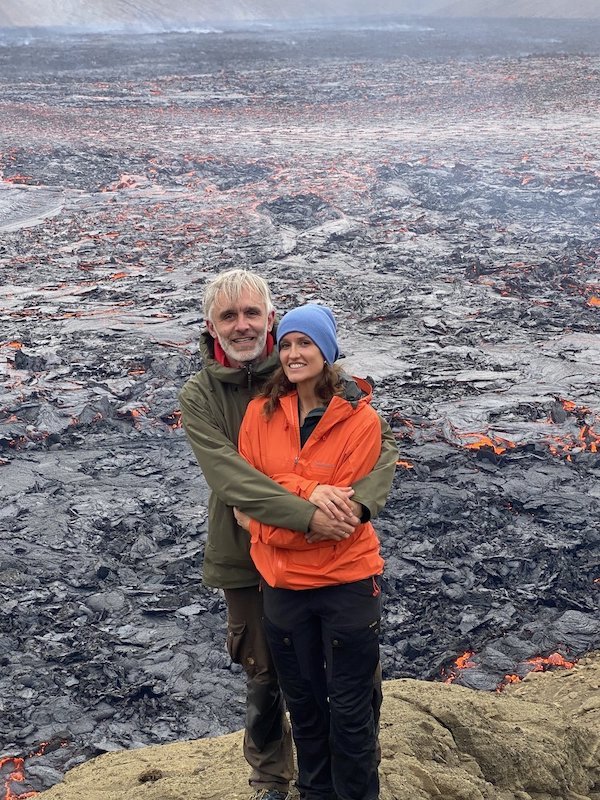

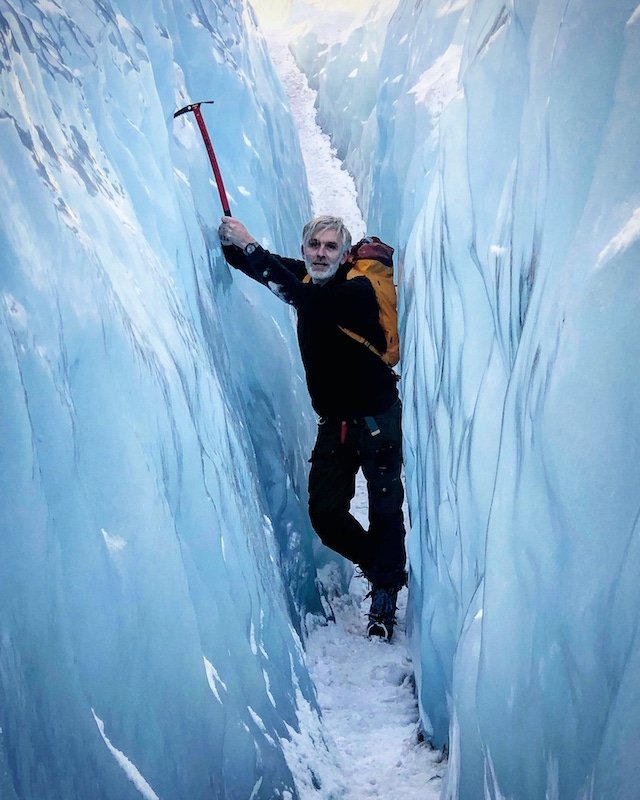


Connect with an Iceland expert!







